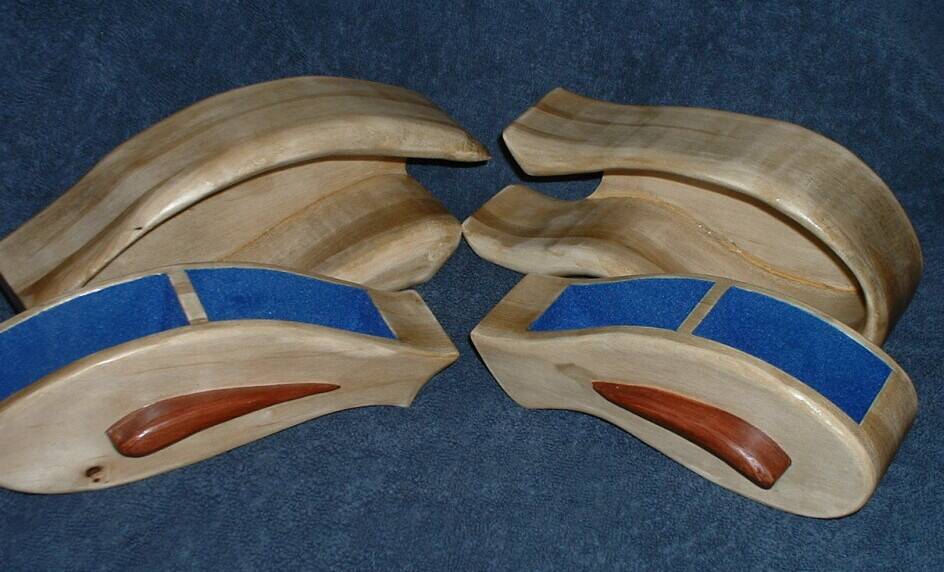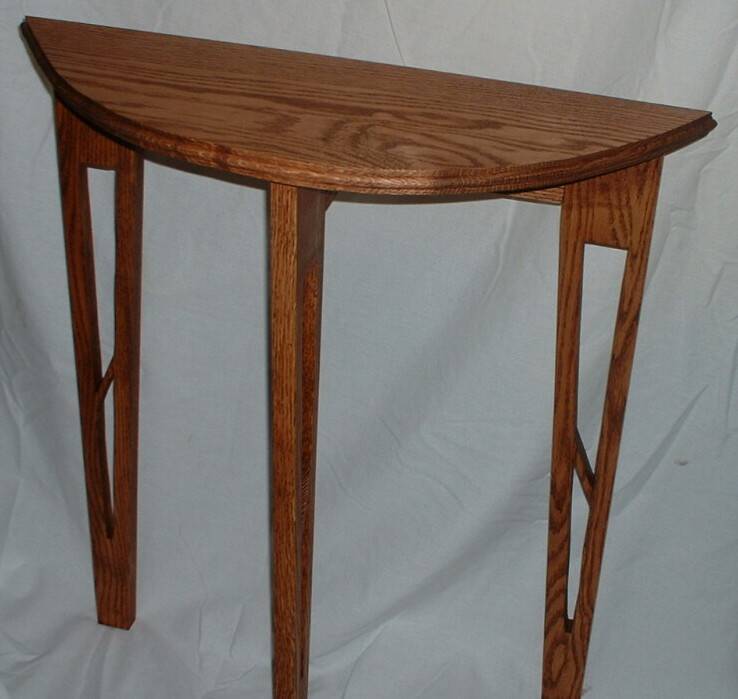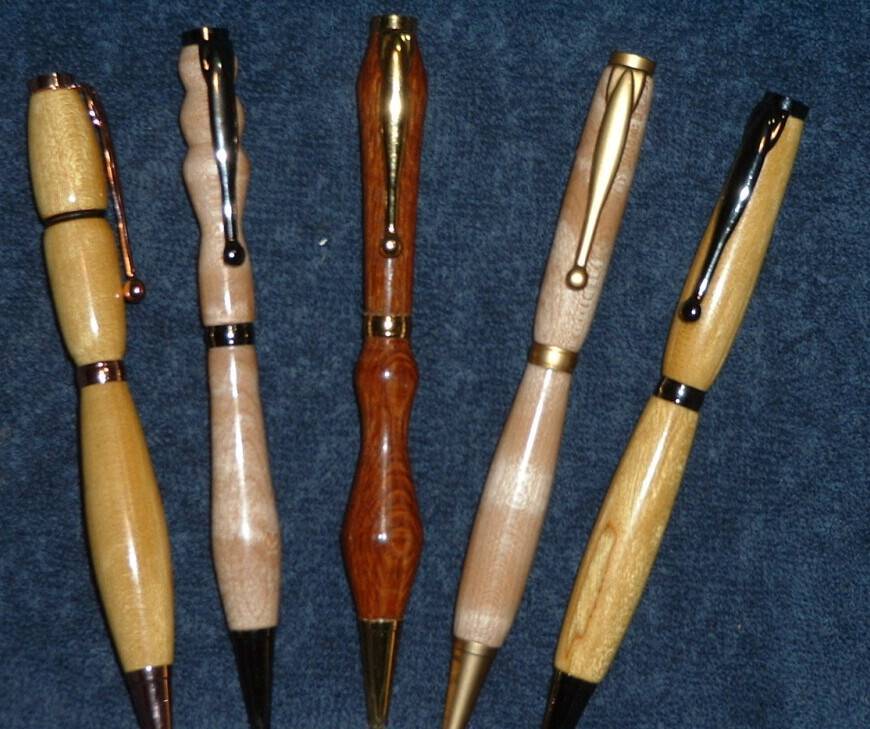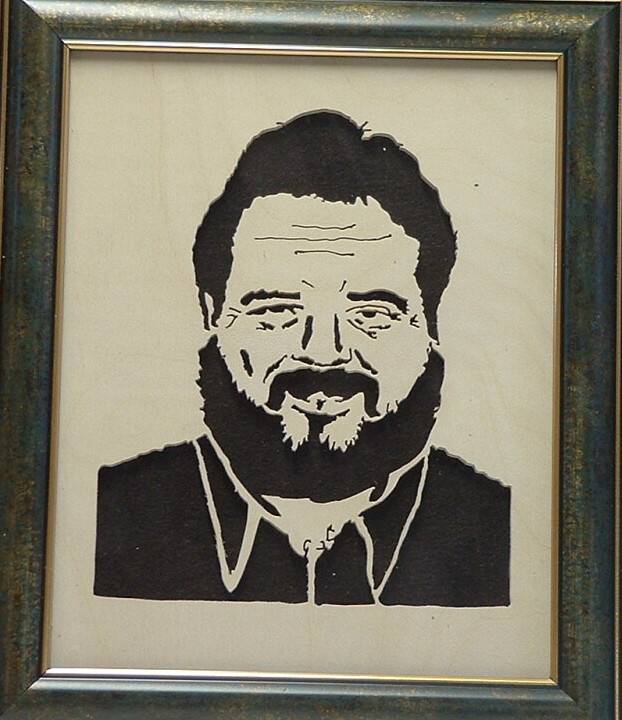Finding Your Path in Woodworking: A Seasoned Perspective from the Bench
By Mike G.
The Master’s Workshop of WI
It starts with a spark.
Maybe it’s the quiet rhythm of a hand plane over walnut. Perhaps it’s the gentle hum of a lathe spinning a blank into a bowl. Or maybe, it’s the soft grain of cedar catching the light just right. Whatever it is, something about woodworking stirs the soul—a holy echo of creation itself.

Bandsaw Boxes
If you’re here, reading this, chances are that spark has already kindled in you. You’ve felt the pull of the woodshop, and now you’re asking the next natural question: What kind of woodworking should I do?
It’s a question I’ve heard more times than I can count—and one I’ve asked myself more times than I’d like to admit. After nearly thirty years working with wood, I can tell you this: there’s no one-size-fits-all answer. Woodworking is a broad, beautiful, endlessly varied world. Your path in it should reflect you—your interests, your shop space, your season of life.
Let’s take a walk through the possibilities together. And maybe along the way, you’ll hear the whisper of where you’re meant to begin.
The Many Faces of Woodworking
Carpenters and Furniture Builders
Most people, when they first hear “woodworking,” picture two kinds of folks: the carpenter and the furniture maker.
Carpenters frame houses, build decks, remodel kitchens. They work outdoors, on-site, with tape measures hooked to their belt and nail guns ready. Precision is important, but it’s practical precision—close enough to stand plumb, level, and strong.
Furniture builders, by contrast, tend to live in the shop. Their work is deliberate, patient, even fussy by comparison. A sixteenth of an inch off can mean a drawer that doesn’t close or a joint that doesn’t hold. Where carpentry is bold and structural, furniture making is refined and quiet. One builds a shelter. The other builds a legacy.
But the world of woodworking is even wider than that. Much wider.
There are scroll saw artists who cut portraits from plywood. Turners who shape tree limbs into bowls. Box makers crafting keepsakes, and cabinetmakers installing kitchens. There are folks who burn pictures into wood with heated pens, and others who whittle animals from fallen branches. Some even build boats. (Not me—but I tip my hat to them.)
Each discipline calls for different tools, different skills, different kinds of patience. But they all start the same way: with your own two hands and a piece of wood.
Types or Disciplines of Woodworking
Furniture Making: More Than Tables and Chairs

Simple Oak Hall Table
So you want to build furniture? Wonderful. But here’s the real question: What kind of furniture?
You see, even “furniture” is a world unto itself. Beds, dressers, vanities. Rocking chairs, kitchen tables, desks. Bookcases, entertainment centers, coffee tables. Each type brings its own joinery, its own challenges, and its own sense of satisfaction when you finally slide that drawer in for the first time and it glides smooth as butter.
Then there’s style to consider. Will you build in the straight lines of Shaker simplicity? The curves of Queen Anne? The rugged strength of Mission, or the bold honesty of Mid-century Modern? Do you want your pieces to look like they came from a barn, a palace, or an art gallery?
Each style has its own rules—some written, some unwritten. Some demand specific tools and techniques. Some just ask that you care.
And that, really, is what good furniture making always demands: care.
You’ll want a decently outfitted shop—a table saw, planer, jointer, drill press, maybe a band saw. But more than that, you’ll need time, attention, and a willingness to learn the slow way. If that sounds like you, you might just find joy in the furniture path.
Turning: Beauty in Motion

Two yellowheart, two maple, and one miscellaneous wood turned pen.
There’s something magical about turning wood on a lathe. The blank spins, the tool touches down, and shavings fly like ribbons. One moment, it’s a rough hunk of firewood. Next, it’s a pen. Or a bowl. Or a candlestick.
I’ve turned hundreds of pens over the years—many of them given away as gifts. A turned pen isn’t just a writing instrument. It’s a testimony. A reminder that something useful and beautiful can come from the most unassuming block.
Turning is its own kind of prayer. It requires rhythm. Sensitivity. You don’t force the wood—you dance with it.
I find that I let the wood talk to me and it dictates the form that it becomes. Similar to what Michelangelo said about sculpting David. He was in there all the while. I just chipped away the parts that didn’t belong.
The equipment needs are more modest here. A lathe, some chisels, maybe a bandsaw to rough out blanks. A good dust collector helps. You can do a lot in a small space, and that’s part of the appeal. But be warned: turning can be addictive.
Scroll Sawing: Drawing with the Blade

My Scroll Saw Portrait

Praying hands intarsia. Made from Cedar for the hands, Aspen for the robe sleeves, and Bloodwood for the inside of the sleeves on a stained oak ply with Oak Frame
My scroll saw has probably seen more hours than any other tool in my shop. There’s just something peaceful about it. The gentle up-down of the blade. The smell of cut birch or cherry. The moment when a flat piece of plywood suddenly reveals a portrait or scene.
Scroll sawing offers so much variety. Fretwork, intarsia, marquetry, portraits, boxes. It’s one of the most artistic forms of woodworking—precision meets poetry. You can get started with just the saw and a way to cut your material to size. And the learning curve is kind if you’re patient.
If you’re the kind of person who loved coloring as a kid—or still does—you might find yourself at home with the scroll saw.
Boxes and Cabinets: Practical Beauty

Pencil and small boxes
Box making might seem simple, but don’t be fooled. It’s a discipline that can be as straightforward or as ornate as you make it.
Simple boxes teach the fundamentals—square cuts, tight joints, grain direction. Ornate ones explore joinery, inlay, proportion, and finish. Jewelry boxes, keepsake chests, tea boxes. The humble box is a canvas for craftsmanship.
Cabinet making builds on the same principles but scales everything up. The cuts are bigger, the measurements more critical, the stakes a little higher. Mistakes are heavier and costlier—but so are the rewards.
If you like solving puzzles and bringing order from chaos, you might just enjoy box and cabinet making.
Pyrography, Carving, and Boats (Oh My!)
Now, I’ll confess—I don’t spend much time in the world of pyrography (wood burning), carving, or boat building. But I know enough to admire those who do.
Wood burning is quiet, delicate work. It takes a steady hand and a nose that doesn’t mind the smell of singed pine. It’s one of the most affordable ways to start working with wood, and it lends itself well to artwork and gifts.
Carving is sculptural, meditative, and very much its own world. A few gouges and a block of basswood can keep a carver busy for hours. The best carvers don’t just shape wood—they breathe life into it.
Boat building is… well, intense. It demands precision, patience, and a good bit of courage. But I have friends who’ve built their own canoes and swear by the experience. It’s not where I’ve spent my time, but if water runs in your veins, it might be where you want to go.
The Wild West of Miscellaneous Woodworking

Simple toy train and Rocking horse
Then there’s everything else: guitar making, toy building, cutting boards, spoons, birdhouses. Whimsical, practical, serious, silly—this is where you make what brings you joy.
Sometimes I think this is where the heart of woodworking really lives. In the projects made for grandkids, neighbors, friends. In the cutting board that gets used every day. In the toy that gets played with until the wheels fall off.
This kind of woodworking doesn’t demand a full shop. It just asks you to show up and make something. You’ll pick up new skills along the way, and maybe discover what kind of woodworker you’re becoming.
Conclusion
So… What Kind of Woodworker Will You Be?
Maybe you know now. Maybe the answer leapt off the page at you. Or maybe you feel more overwhelmed than when you started. If that’s the case—my apologies. But also, congratulations. That sense of being overwhelmed? That’s just possibility, knocking on your door.
The truth is, you don’t have to choose just one path. I sure didn’t.
Over the years, I’ve been a carpenter, a furniture maker, a turner, a scroll saw artist, a toy maker, and more. I’ve remodeled homes, built sheds, cut fretwork, and turned pens. I’ve made gifts, cabinets, bookshelves, and keepsakes. I’ve breathed sawdust for thirty years, and God willing, I’ve got more years of it ahead.
I do what I love. I make what brings me joy. And sometimes, that changes with the season.
That’s the beauty of woodworking—it grows with you.
So start somewhere. Anywhere. Pick up a piece of wood. Feel its weight. Smell its grain. Cut something. Build something. Give it away. Do it again. Your hands will learn, and your heart will follow.
And when you do make something, I hope you’ll send me a picture. I’d love to see it.
Until next time, keep making, keep learning, and keep listening to that quiet voice that says, “Create.”
– Mike G.
When you click and buy through our links, you’re not only upgrading your woodworking game but also supporting The Master’s Workshop of WI—at no extra cost to you. It’s a win-win: you get the best tools, and we keep bringing you top tips and content!
Mike’s Favorites
These are the tools I reach for on almost every project. The seven below are my quick-grab essentials—open the full list for everything I keep on the bench and in my apron.
Top 7 Essentials
- iGaging 6″ Fastener Cal Digital Caliper — Quick, precise checks.
- iGaging 7” and 12” Layout Square Set (also available at Taylor Toolworks) — Reliable layout reference.
- Starrett 6″ Double Square — Everyday layout accuracy.
- Woodcraft 16 ft Tape Measure (Fractional) — Compact; blade stays out on its own.
- Taytools Stainless Steel 6″ Machinist Ruler (4R) — My most-used small measuring tool.
- RZ Mask M2 9-Piece Woodworker’s Kit — Reusable protection against fine dust; far more comfortable than disposables (also available at Amazon).
- ISOtunes PRO 3.0 Bluetooth Hearing Protection — OSHA-certified hearing protection with streaming and calls.
➤ See my full list of Favorites
On the Bench Tools
- iGaging IMPERIAL Bench Squares – Stainless steel blades with wide anodized aluminum base.
- iGaging 7” and 12” Layout Square Set – Anodized aluminum (also available at Taylor Toolworks).
In My Apron Tools
- Katz-Moses 20 oz Waxed Canvas Tool Apron (The apron isn’t in my apron—LOL—but I’d be lost without it.)
- iGaging 6″ Fastener Cal Digital Caliper
- 6-Pack Mechanical Carpenter Pencils with Sharpener and Refills
- Pentel GraphGear 1000 Mechanical Pencil
- Calculated Industries 4019 Material Estimator Calculator
- Woodcraft 16 ft Tape Measure (Fractional) or FastCap Old Standby 16 ft (also at Taylor Toolworks). I prefer the Woodcraft because it’s smaller and the blade stays out on its own. The FastCap works too, but you have to lock and release the blade each time.
- Starrett 6″ Double Square – Hardened graduated blade.
- Starrett 4″ Double Square – Satin chrome finish, hardened blade.
- iGaging 4″ & 6″ Double Square Set (also at Taylor Toolworks). I was gifted my Starrett squares and treasure them, but this iGaging set is a well-made, affordable alternative I’d recommend if you’re buying your own.
- Lufkin Red End Extension Folding Rule (5/8″ × 6 ft) or Crescent Lufkin Wood Rule (6′ Brass Extension). I keep a folding rule for places a tape can’t manage—checking inside a box for square, or when I need a longer, rigid measure. Get one with a brass extension so you can capture full measurements when another arm won’t swing into place.
- Taytools Stainless Steel 6″ Machinist Ruler (4R) Even with other measuring tools, this little rule probably gets used the most.
- EverBrite 9-LED Flashlight, 6-Pack (Assorted Colors)
- Mikov Thin Blade Dual Bevel Marking Knife (0.060″, Rosewood Handle)
- Narex Thin Blade Dual Bevel Striking Marking Knife (also at Amazon). Yes, I carry two knives: this one’s longer for reach where the Mikov can’t go.
Shop Safety Essentials
- RZ Mask M2 9-Piece Woodworker’s Kit — Breathable, reusable, and essential for sanding/cutting (also available at Amazon).
- ISOtunes PRO 3.0 Bluetooth Hearing Protection — OSHA-certified hearing protection with streaming and calls.
Some links above are affiliate links. Thanks for supporting The Master’s Workshop of WI!
This list is updated as I refine my shop setup and favorite tools.
© May 23, 2025
the masters workshop of wi
